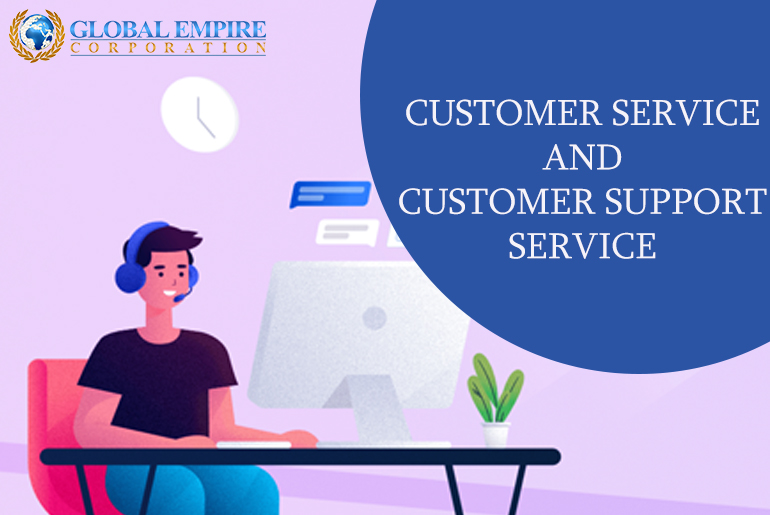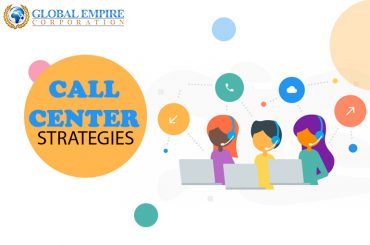Client service and customer support service are important aspects of delivering a positive customer experience. They promote client loyalty, word-of-mouth referrals, and recurring income when effectively implemented.
Customer service and customer support service are two terms that everyone uses interchangeably, and both may considerably influence your customer retention rate. Despite apparent similarities, the two names relate to very distinct entities.
It is crucial to understand the differences. You will be able to define job duties better, make smarter recruiting decisions and reduce customer irritation by providing the service they require after you’ve separated them. Customer support outsourcing services can help your business achieve high growth.
Defining customer service.
Customer service is a broad word that encompasses all contacts between your company and its clients. Customer service will be present in almost every business. Everything you do to benefit and meet your customers’ expectations while also improving the entire customer experience is part of customer experience management.
Customer service’s ultimate purpose is to assist consumers in getting the most value out of your product or service—yet it’s a minefield of potential stumbling blocks for firms with disorganised customer care staff and inflexible phone systems.
Customer service is a long-term commitment. It starts the minute a consumer expresses an interest in what your company offers and can last for years after they have purchased anything from you.
Responsibilities of the customer service.
Customer care representatives advise and delight consumers at every point of the customer lifecycle. This might include assisting a client in resolving a typical issue or providing pre-emptive guidance on avoiding unanticipated problems.
Following are the common customer service activities.
– Acquiring new customers.
– Responding to queries and comments on social media.
– Assisting consumers with invoicing and delivery difficulties.
– Taking care of non-technical account concerns.
– Recommendation of more effective tools or approaches.
– Getting comments and evaluations from customers.
– Upselling.
Agents who work in customer service often have a deep awareness of the company, its products, and customer communication channels. Even if they lack specialized expertise, they are capable of addressing basic queries and will be able to direct consumers to more knowledgeable sources. This is the reason why teamwork is so critical.
Soft skills are an important component of providing excellent customer service. The greatest customer service representatives are straightforward, patient, empathic, and helpful, and they pay special attention to the customer’s specific circumstances.
Defining customer support service.
Customer service is divided into two parts: customer support service and customer service. Its goal is to assist consumers with any technical problems while using your product or service.
Customer service interactions are often reactive and brief. In most circumstances, the client contacts the support agent with an issue to resolve, and the employee finds a solution. After that, customer support service employees will either deploy the solution or walk clients through the necessary procedures.
Customer support service is most frequently seen in SaaS, IT, and eCommerce companies. Not every company needs customer support service. Despite emphasizing customer support service, Restaurants do not have to provide technical assistance to their customers.
Responsibilities of customer support service.
Customer support service representatives are available to give prompt and accurate solutions to user issues as they arise. Support agents can provide useful consumer input to product development teams due to their constant exposure to customer difficulties.
Common customer support service activities;
– Troubleshooting with consumers in real-time via support emails and live chat.
– Assisting consumers with product or service installation, maintenance, upgrades, and disposal.
– Creating product documentation and related materials.
– Performing usability tests.
– Contributing to product development.
An effective customer care person must have speed, technical skills, and product knowledge. On the other hand, customer support service agents should have the same empathy and people skills as any other customer care agent to provide the greatest possible experience to clients.
Read 5 Reasons to Outsource Customer Service
Tips to offer better customer service and customer support service.
Be accurate.
Your customer service strategy, in general, and customer support service strategy should be consistent. You’ll end up with confusion and discrepancies if you don’t have a consistent method for customer care.
Begin by outlining your customer service concept and values. This will codify the principles you wish to govern each of your company’s customer service encounters, such as speed, accessibility, and responsiveness.
You may also build a customer service playbook that specifies standard procedures and best practices for your team. This will include strategies for reporting problems and errors and when and how to develop help content, and how to capture client feedback.
Have all the tools.
Giving your staff the necessary tools allows them to focus on serving and supporting your consumers. Customers and agents benefit greatly from high-quality support tools. They also convey the impression that you operate a polished and professional business. Offering your consumers omnichannel customer support service, for example, means they may contact you via any channel that fits them best—live chat, social media, in-app messaging, phone, or email.
Client profiles provide a detailed portrait of each customer based on their experiences with your company across various channels. Any agent who connects with a customer gets an instant overview of the customer’s history and needs. Customers save time by not repeating themselves to various agents, while agents save time by solving client problems faster.
Clear communication.
When dealing with consumers, clarity is crucial. Uncertainty in communication leads to misunderstandings and needless errors, which can erode a customer’s trust in your business.
Remove technical jargon and industry terminology from your communications to avoid misinterpretation, use simple terms where simple words will be enough, and don’t overload the consumer with too much information at once.
Transparency is another crucial aspect of effective communication. If a customer asks a question to which you don’t know the answer, it’s OK to tell them you don’t know and that you’ll get back to them as soon as you do. Call center outsourcing companies provide the best communication services to businesses.
Positive language.
Customers should not only grasp your explanations and directions, but they should also feel personally encouraged and driven to reach their goals. Positive language is a must in customer support service strategy.
Finish conversation with a good note.
Approximately 91 percent of unsatisfied consumers leave without complaining. As a result, your customer care and support staff must resolve all client contacts on time. You can’t determine whether your consumer had a positive experience until you make sure they were happy with the interaction.
When a client discussion appears to be lagging, always ask if there’s anything further you can do to assist them. This will signal to the customer that you care about the issues they are having and that you are ready to take as much time as they need. When the consumer states they are done and have no further questions, you may end the conversation knowing that the client was pleased with the contact.
Give priority to first-contact resolution.
Customers expect their issues to be fixed quickly when contacting customer care or support. If problems are resolved the first time they arise, up to 67 percent of turnover can be avoided. This implies you should prioritize first-contact resolution, often known as first-call resolution. It should be part of your customer support service strategy.
Preach and practise empathy.
Making a customer feel heard and understood necessitates a thorough understanding of their requirements. This is particularly crucial for customer service representatives to remember. Even if the problem is a simple remedy, customers who call for assistance frequently face annoyance. Rather than getting right into the technical issue, support professionals should take the time to exhibit empathy for the customer’s particular predicament.
Similarly, establishing rapport with customers—addressing them by name, asking questions about their business, and expressing enthusiasm for their plans—goes a long way toward delivering a human-centered customer experience.
Time-saving with a response template.
There will be certain common consumer questions that your service and customer support service personnel will have to deal with regularly. One strategy to ensure rapid and consistent replies to common questions is to create a bank of stored responses that your agents may edit as required.
Work collectively in customer support service.
Involving all workers in frontline customer care and support, also known as customer service teams, is one efficient technique to develop a customer-centric strategy and culture throughout your company.
This may be having individuals from various teams sit in on customer calls regularly or conducting frequent cross-team talks to discuss client feedback. The aim is to experience the client’s suffering to keep their job focused on the customer.
Conclusion.
Customer service and customer support service are two different parts of providing a smooth customer experience and fostering strong customer relationships, even though they are often confused. Customer service refers to all of the best practices, methods, and principles that guide your interactions with customers, whereas customer support service focuses on technical issues.
The same individual frequently handles customer service and customer support service in smaller firms. Both of them will have their specialized staff for other firms. Your success will be determined by your ability to acknowledge the distinctions while seamlessly offering both, regardless of how your company is structured.
Also read How Customer Service Can Turn Into A Successful Marketing Tool?





